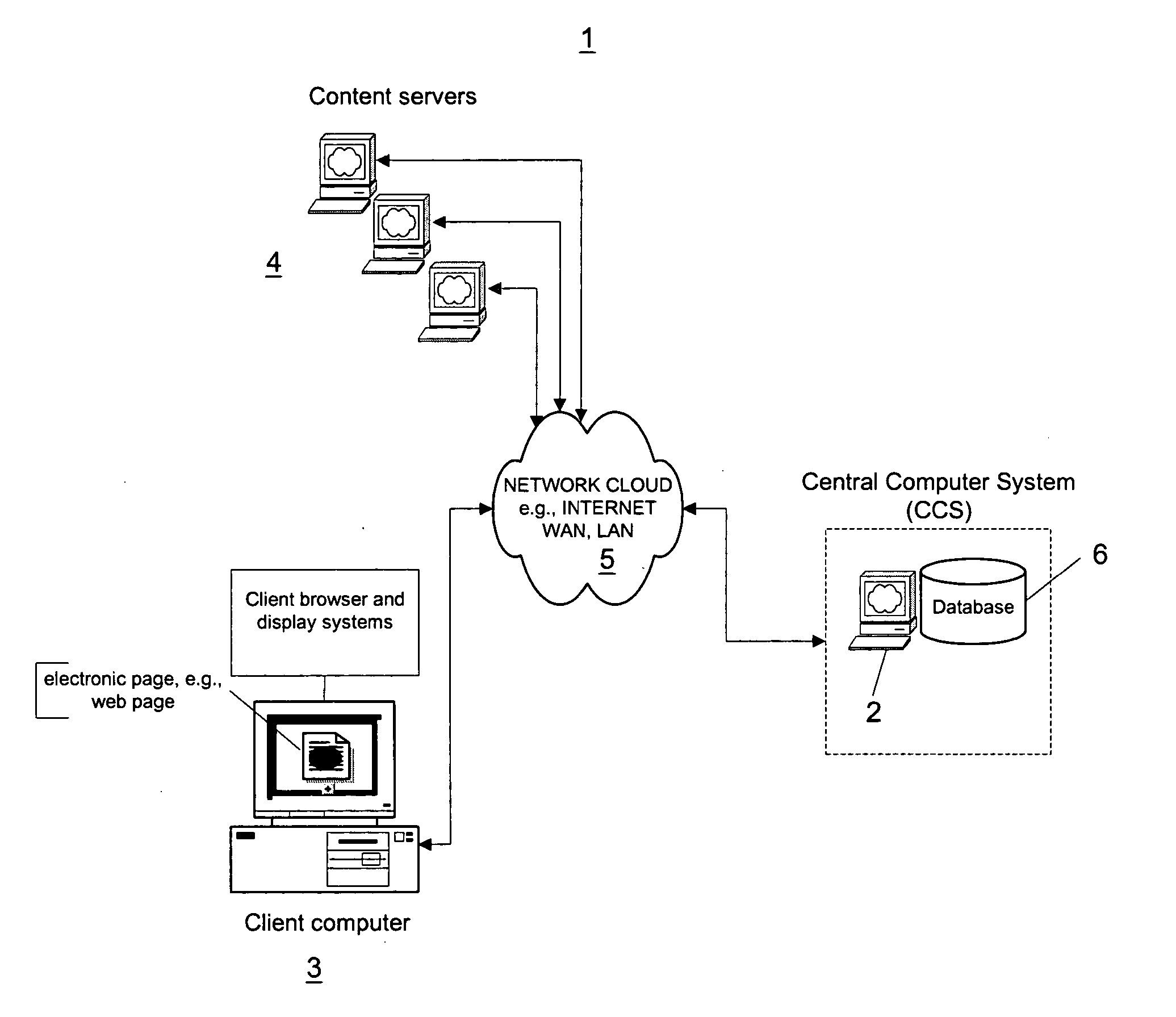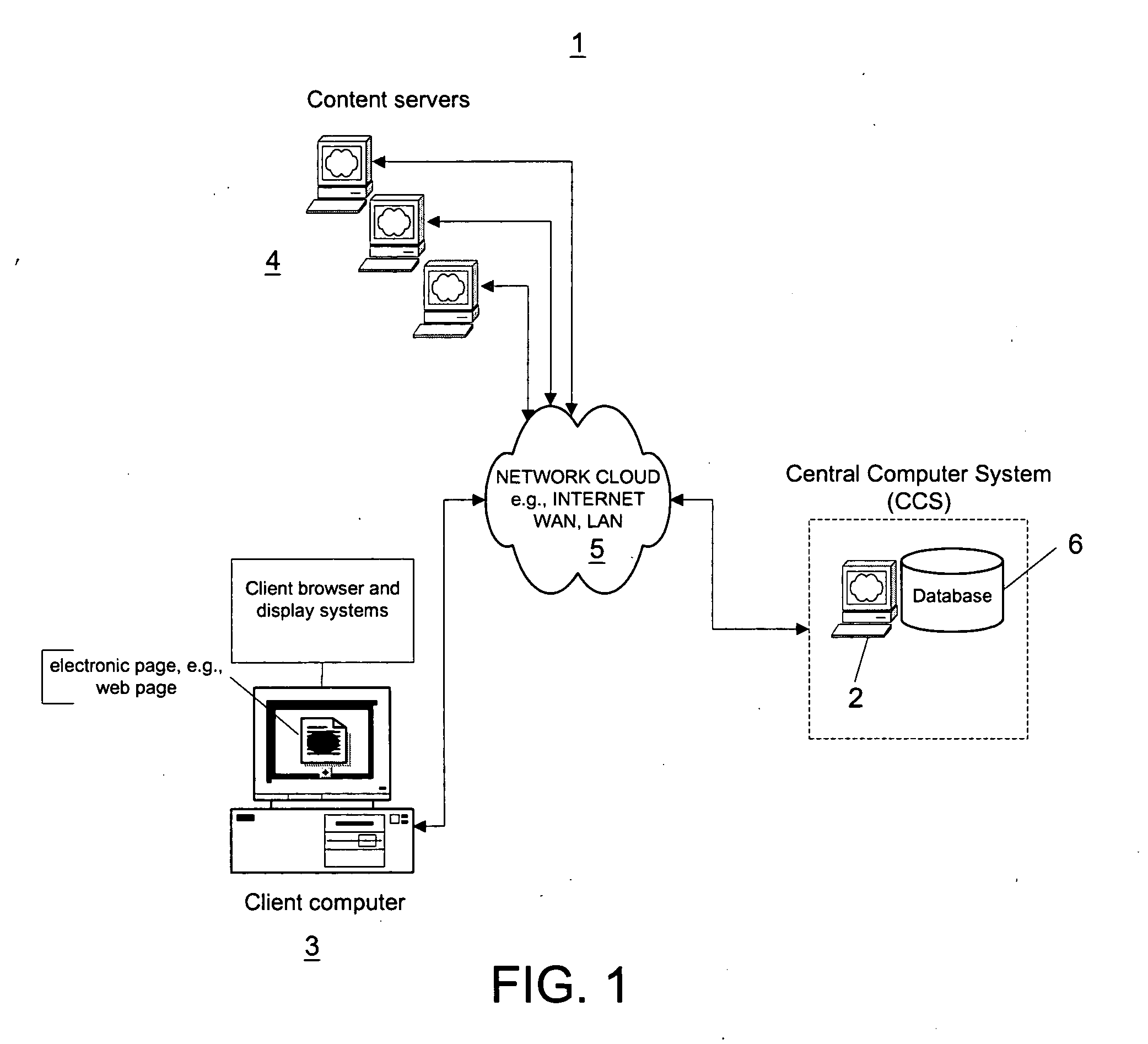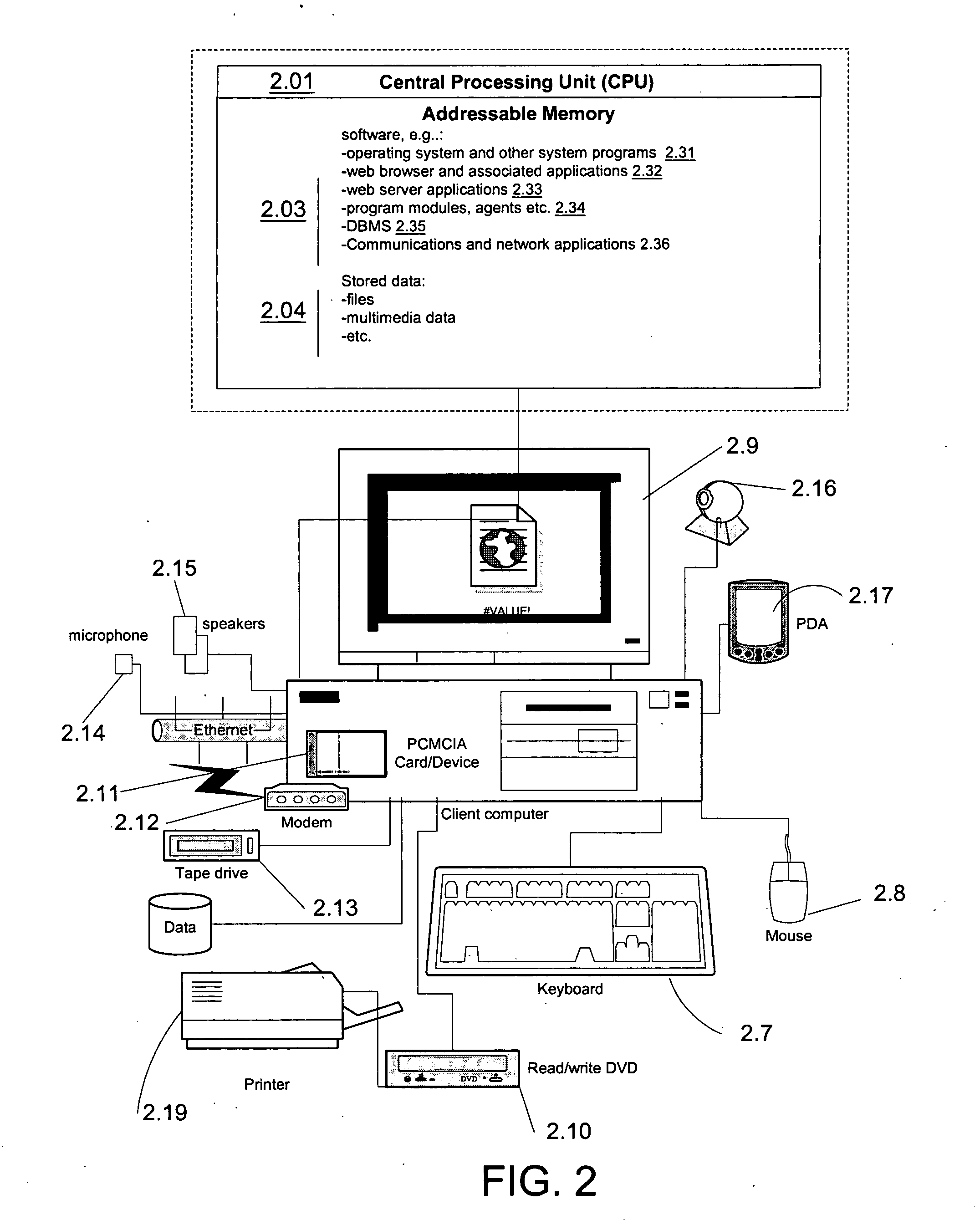Systems and methods for automatic identification and hyperlinking of words or other data items and for information retrieval using hyperlinked words or data items
- Summary
- Abstract
- Description
- Claims
- Application Information
AI Technical Summary
Benefits of technology
Problems solved by technology
Method used
Image
Examples
example 1
Client-Based Annotation
[0077]FIG. 8 shows an overview of functions associated with a client-server computer system 8.0, with the client computer system 3 (“Client”) implementing certain recognition and annotation modules. In particular, the Client hosts the Recognizer 20 and / or Annotator 30 Modules. These programs may be installed on the Client from a download, CD-ROM, or other means of application installation
[0078] Typically, a content provider 4 will serve an electronic content document 8.2 via a server to a user's browser 8.4. Typically, this would be a web document. The web document is passed to the Recognizer by a tracking application or module that monitors the Client for newly loaded web pages. The tracking function may be referred to herein in as a “Tracker”8.6. The recognition and annotation functionality for this embodiment is in accordance with the earlier descriptions of the Recognizer 20 and Annotator 30. After recognition functions are performed by the Recognizer, a...
example 2
Server-Based Annotation
[0083]FIG. 10 shows an overview of a system 10.0 wherein the Recognizer 20 and / or Annotator 30 Modules are executed in whole or part on a central computer system (“CCS”) 2. However, some functions may be performed on the client side so that the overall annotation and recognition functions are not necessarily entirely based on the CCS. In this system, a document 10.4 from a content provider includes certain instructions, in the nature of, for example, scripts with annotation or recognition functionality that may be executed by the client system receiving the document. Alternatively, or in conjunction therewith, document 10.4 may include an address on a CCS or another computer that the client system calls to after executing instructions on document 10.4. In response, the CCS returns to the client system annotation and / or recognition scripts and / or data executable or usable by the client system to perform recognition or annotation functions.
[0084] The scripts, ...
example 3
Product Search System
[0087] A Key Element in the present invention may be used to formulate input for a search engine. FIG. 11 shows a system 11.0 for searching. In one possible embodiment, the Key Element is a word or phrase that may be used as the basis for a query of, for example, a database 11.4 or distributed system of files or documents 11.6. FIG. 12 represents an example of a web page with a Key Element 12.2 that is annotated and highlighted. The Key Element is the phrase “nine yards”. The Key Element annotation includes a URL to a search engine. A selection of the annotation 12.2 forms a query 11.4. For example, a word or phrase comprising, derived from or otherwise associated with the Key Element is sent to a search engine associated with the Key Element URL annotation. In the example, the query phrase is “nine yards”. The search engine receives and inputs 11.6 the data and queries 11.12, 11.14 the source containing searchable data. In a preferred embodiment of the present...
PUM
 Login to View More
Login to View More Abstract
Description
Claims
Application Information
 Login to View More
Login to View More - R&D
- Intellectual Property
- Life Sciences
- Materials
- Tech Scout
- Unparalleled Data Quality
- Higher Quality Content
- 60% Fewer Hallucinations
Browse by: Latest US Patents, China's latest patents, Technical Efficacy Thesaurus, Application Domain, Technology Topic, Popular Technical Reports.
© 2025 PatSnap. All rights reserved.Legal|Privacy policy|Modern Slavery Act Transparency Statement|Sitemap|About US| Contact US: help@patsnap.com



